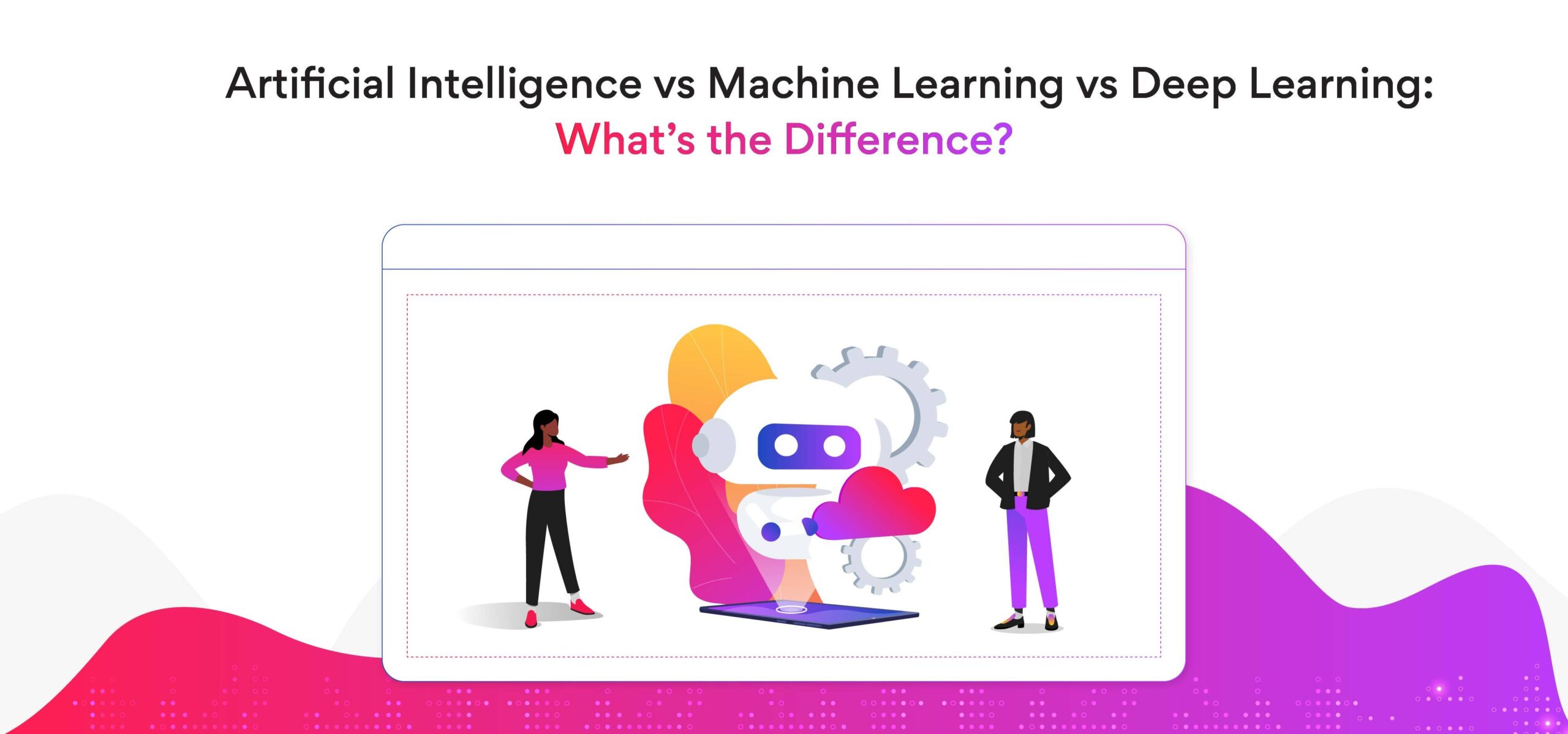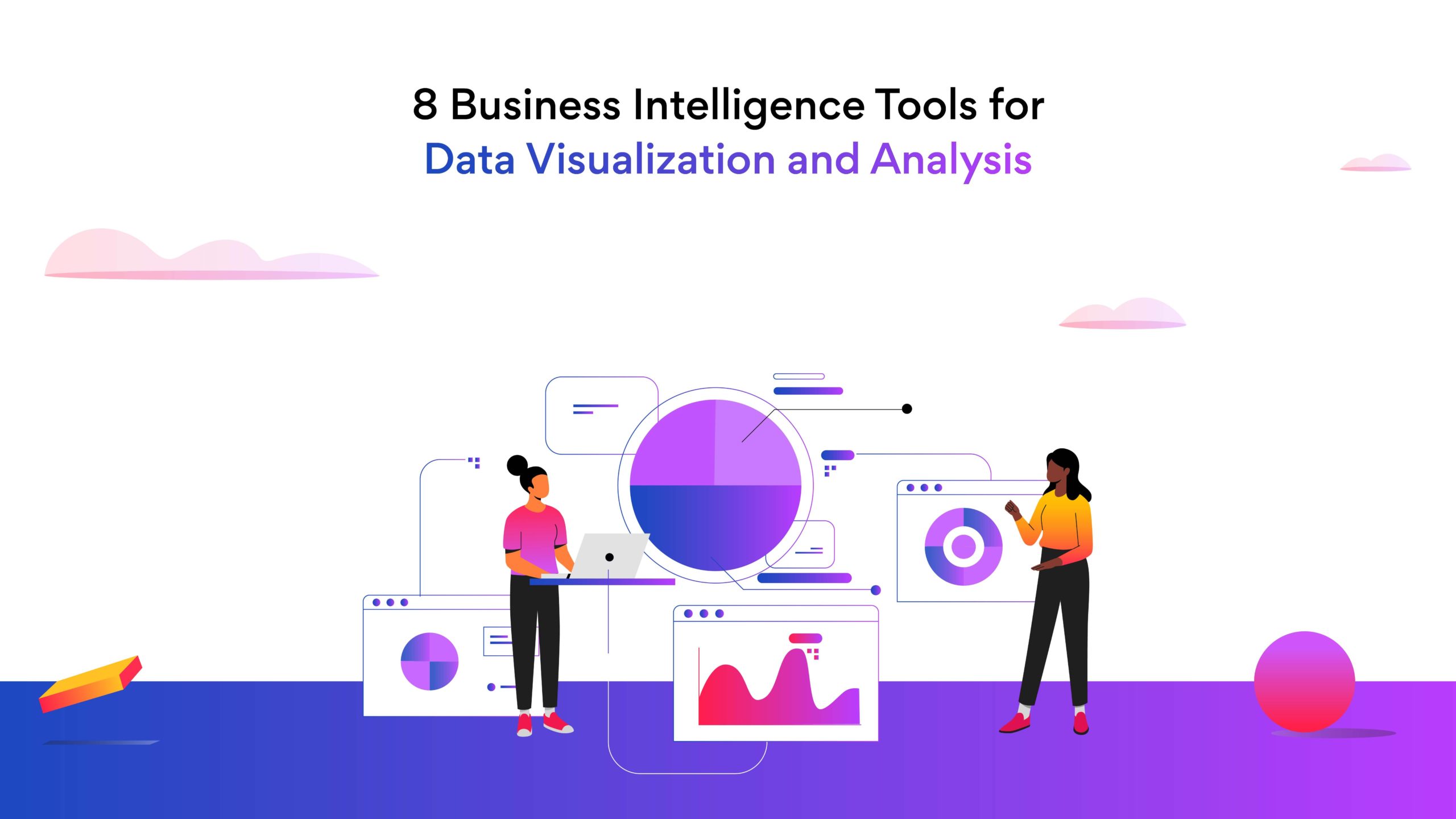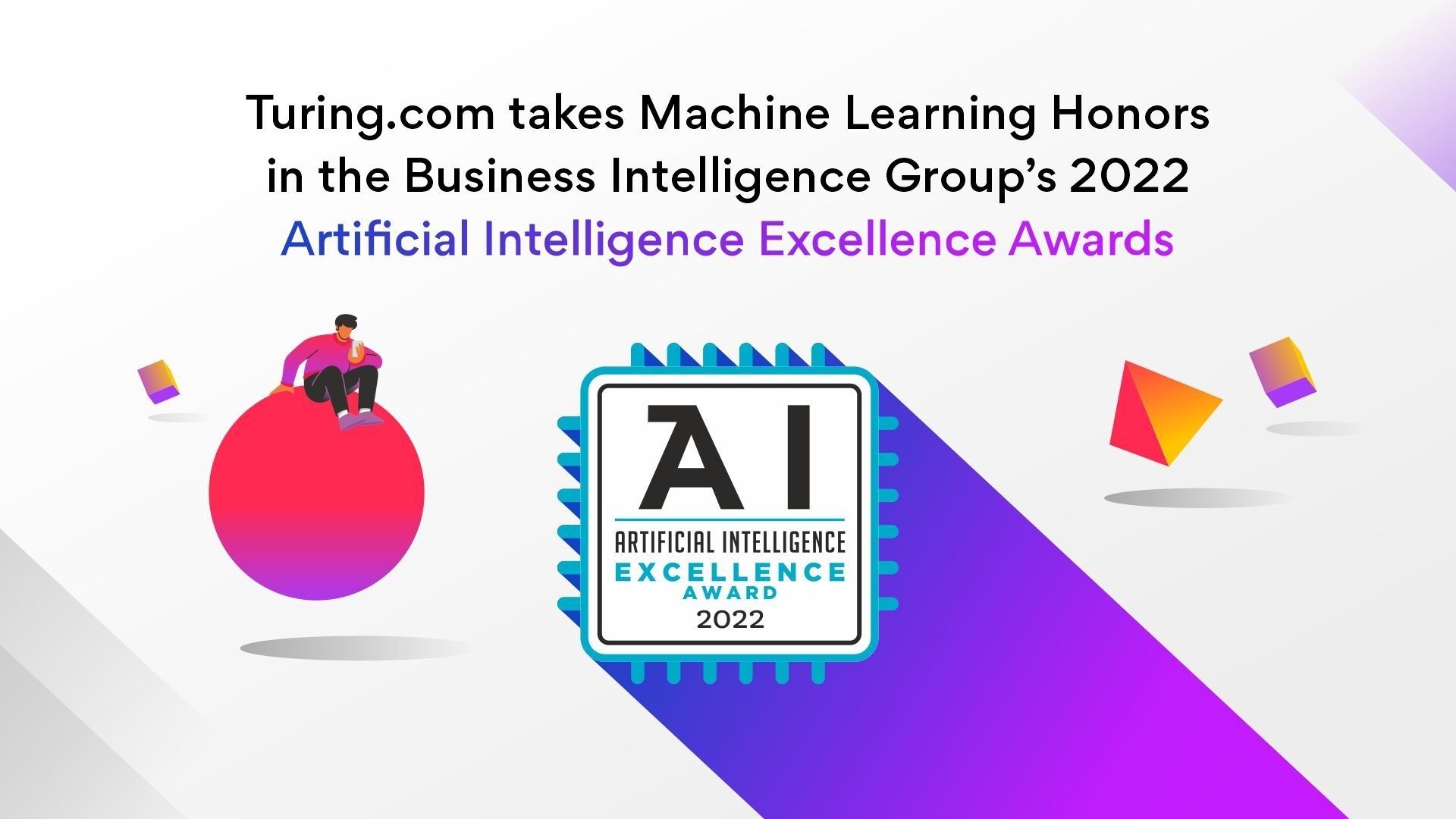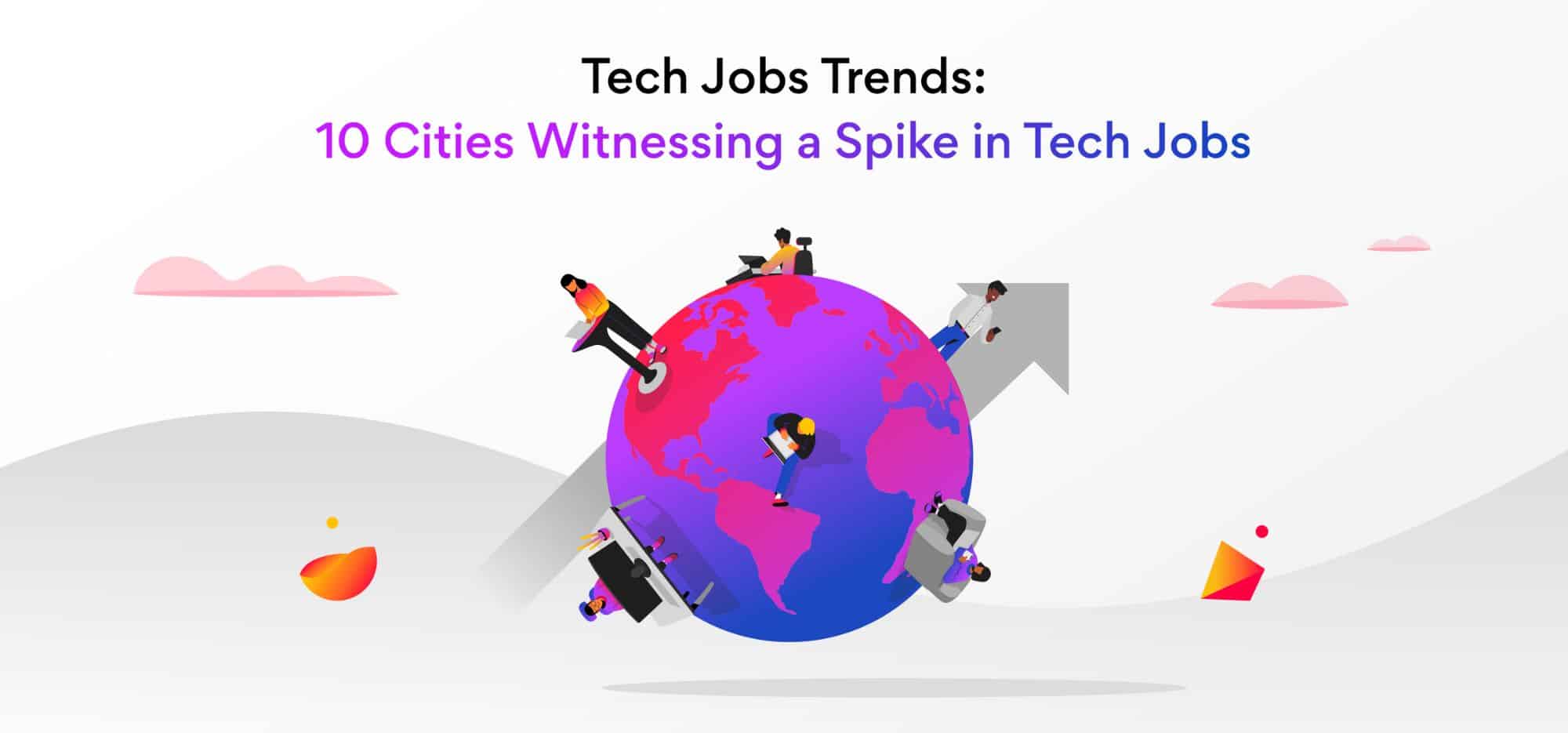Artificial Intelligence vs Machine Learning vs Deep Learning: What’s the Difference?
What is machine learning? What is Artificial intelligence? What is deep learning? Is deep learning a form of AI? What should I learn first, AI or ML?
This post will help you answer all these questions.
Artificial intelligence, machine learning, and deep learning are advanced technologies that enable companies to create futuristic applications and machines. Companies are looking to hire trained professionals in the field of AI, machine learning, and deep learning to build applications that set them apart from the competition.
Organizations and hiring managers must understand the key differences between AI, deep learning, and machine learning before interviewing applicants for relevant job roles.
Deepen your knowledge of AI/ML & Cloud technologies and learn from tech leaders to supercharge your career growth.
Attend Turing Data and DevOps Conference
What is artificial intelligence?
Artificial intelligence is the process of creating smart human-like machines. AI-powered machines aim to think and act like humans. Machines gather human intelligence by processing and converting the data in their system. Most machines with artificial intelligence aim to solve complex problems like healthcare innovation, safe driving, clean energy, and wildlife conservation.
Artificial intelligence is an umbrella term that includes natural language processing, machine learning, deep learning, machine vision, and robotics, among other things. Check out this post to learn more about the best programming languages for AI development.
Machine learning is a subset of AI that helps you create AI-based applications, whereas deep learning is a subset of machine learning that makes effective models using large amounts of data.
For example, Amazon Echo smart speaker is an AI-based product that uses natural language processing to convert users’ voice commands into a machine-readable format. Amazon Echo uses Alexa, a voice user interface to get answers to user queries and return a positive voice output.
What are different types of artificial intelligence?
There are four different types of artificial intelligence.
-
Reactive machines
Reactive machines use the input to give some output but do not store these inputs or perform any learning functions. These machines do not have any memory and constantly need inputs to give output. Examples include chess programs on computers, Netflix’s recommendation engine, and spam filters. -
Limited memory
Limited memory machines store data over time and use that data to make predictions. Such machines create predictive models on the basis of input data. The AI environment in limited memory machines updates the old prediction model in lieu of new data. Examples include self-driving cars. -
Theory of mind
There is no theory of mind application at the moment. Google Maps as a theory of mind application would reply in a sentient manner. For example, the app would reply ‘calm down please’ to an angry user demanding directions before giving the directions. -
Self-aware
There are no self-aware AI-driven machines right now. We are still a few years away from making machines that can think and act like human beings. A self-aware AI system will have complete access and understanding of its own. This type of AI will be an exact replica of human intelligence.
Related Post: Reshaping the Healthcare Industry with AI
What is machine learning?
Machine learning utilizes statistical algorithms to create predictive models based on past learnings and findings. Machine learning applications process a lot of data and learn from the rights and wrongs to build a strong database.
A common example of machine learning is a chatbot used for assisting existing and potential customers online. When a user feeds a query into a chatbot, the chatbot recognizes the keyword and pulls the answer from the database.
What are the different categories of machine learning?
There are three different categories of machine learning.
-
Supervised learning
Supervised learning uses labeled data to produce trained machine learning models. In supervised learning, existing sets of input data and output responses create the classification and training models.
Common examples of supervised machine learning algorithms include logistic regression, linear regression, naïve bayes, decision trees, and support vector machines. These algorithms help create image classification, fraud detection, and spam filtering applications. -
Unsupervised learning
Unsupervised learning is a type of machine learning in which models are trained using an unlabeled dataset and allowed to act on that data without any supervision.
Common examples of unsupervised machine learning algorithms include hierarchical clustering, anomaly detection, and k-means clustering. These algorithms help build recommendation systems and fraud detection applications, among others. -
Reinforcement learning
Reinforcement learning is the process of learning through trial and error. Reinforced learning uses a reward and penalty system to develop machine learning models. The interaction with the data takes place in an exploratory manner by creating successful actions through critical feedback.
Common examples of reinforcement learning algorithms include Q-learning and deep Q-learning of neural networks. These algorithms are used in multiagent systems, game theory, control theory, simulation-based optimization, and swarm intelligence, among others.
Related Post: What Is MLOps and How You Can Get Started With it?
What is deep learning?
Deep learning refers to the process of creating algorithms inspired by the human brain. Similar to the human brain, deep learning builds neural networks that filter information through different layers.
For example, Google translate uses a large neural network called Google Neural Machine Translation or GNMT. GNMT uses an encoder-decoder model and transformer architecture to reduce one language into a machine-readable format and yield translation output.
What are the different types of network architecture of deep learning?
There are three types of network architecture of deep learning.
-
Convolutional neural network
The convolutional neural network (CNN) is a type of deep learning algorithm that classifies input images or data based on weights/biases. This algorithm is inspired by the structure of the visual cortex of the human brain. CNN is widely used in facial recognition technology. -
Recurrent neural network
The recurrent neural network builds sequential models based on past data. Each sequence has some memory of the previous output that it combines with the latest input to give the best outcome. Google’s voice search uses the recurrent neural network. -
Recursive neural network
The recursive neural network uses a tree-like structure to process data over time. The RNN network builds predictive models to apply to sequential data for favorable outcomes. The tree-like structures break down large chunks of data into small hierarchies that clearly define related datasets.
Differences between artificial intelligence, machine learning, and deep learning
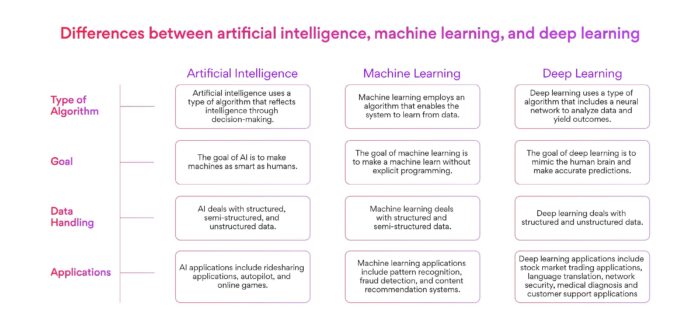
Differences between artificial intelligence, machine learning, and deep learning
Summary
Deep learning and machine learning are subsets of AI wherein AI is the umbrella term. Each of these technologies can create smart applications. Companies can use machine learning, deep learning, and artificial intelligence for several projects.
However, before choosing the right technology and hiring the right candidates make sure that you consider the project size and the resources the company can allocate for the project.
If you want to hire skilled, pre-vetted artificial intelligence, deep learning, and machine learning professionals try Turing.com.
Turing helps you hire the top 1 percent of software developers in 4 days. Companies can choose from a pool of 3 million developers to find the best candidate.
FAQs
- What is the best language for machine learning?
Popular programming languages for machine learning include Python, R, LISP, Java, and JavaScript. - Where is deep learning used?
Deep learning is used in several industries including medical science and automated driving among other things. It is used for diagnosing life-threatening diseases like cancer by building imaging software and identifying road signs to assist drivers. - Is AI easy to learn?
AI can be easy to learn if you are good at math and have excellent problem-solving and critical thinking skills.
Tell us the skills you need and we'll find the best developer for you in days, not weeks.
